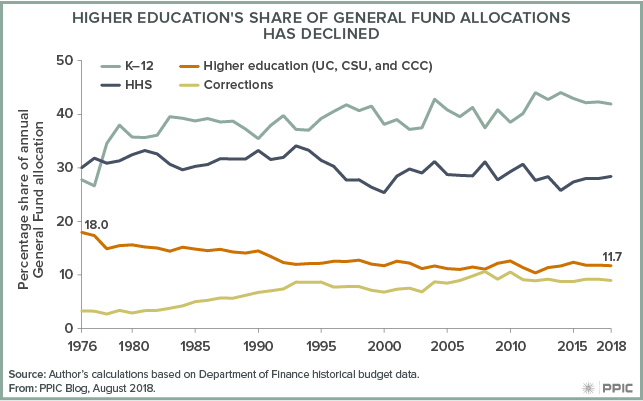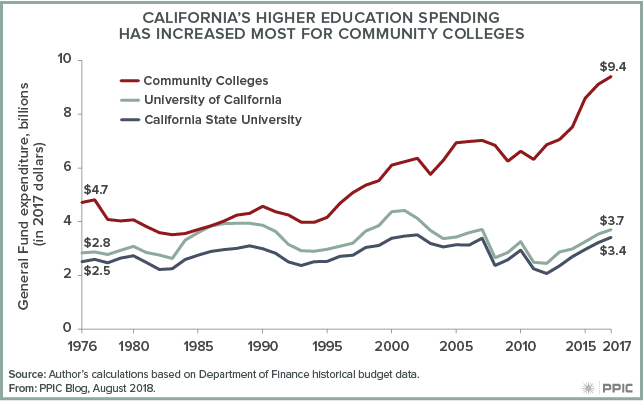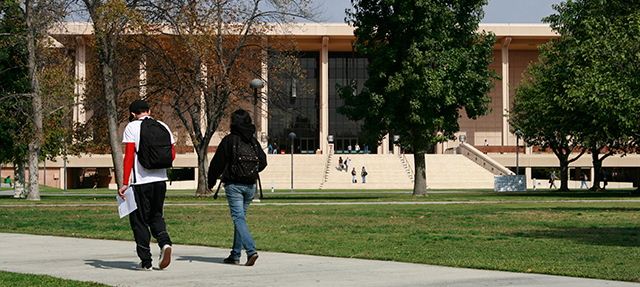Along with tuition, state General Fund allocations are the largest source of revenue for California’s public colleges and universities. Overall, the state’s largest General Fund expenditures are in two areas: K–12 education, which has increased in relative size over time, and health and human services, which has experienced slight long-term declines. Corrections, which used to receive a very low share of General Fund allocations, has seen strong growth and now rivals higher education.

For decades the share of the state’s General Fund budget allocated to higher education declined substantially, from 18.0% in 1976–1977 to 10.4% in 2012–13. However, this pattern has reversed in the past few years. Indeed, California’s recently enacted 2018–19 budget continues the gains seen in recent years, with the state’s public colleges and universities receiving 11.7% of General Fund allocations.
These recent increases (and previous declines) were not experienced equally across the state’s three public systems of higher education. Because the community colleges are a part of the Proposition 98 funding guarantee (enacted in 1988), they were protected from the severe funding cuts that were experienced by the University of California (UC) and the California State University (CSU) during the Great Recession and enjoyed sharp gains in revenue as the state’s economy recovered. In comparison, even with increases in recent years, UC and CSU General Fund allocations remain below levels seen in the early 2000s (even as they serve more students), and their share of state General Fund allocations remains at historic lows.

This current funding situation is attributable less to long-term policy choices than to structural components of the state budget. The relatively slow growth of state funding for UC and CSU stems partly from the fact that the systems can raise tuition when state funding is cut during economic downturns. This is clearly not an option for other functions of government, including health and human services, K–12 education, and the corrections system. Budget decisions encompass many competing goals, with difficult trade-offs and long-term impacts. Moving forward, California’s budget planning needs to incorporate long-term goals that lead to a safer, healthier, and more prosperous state.




